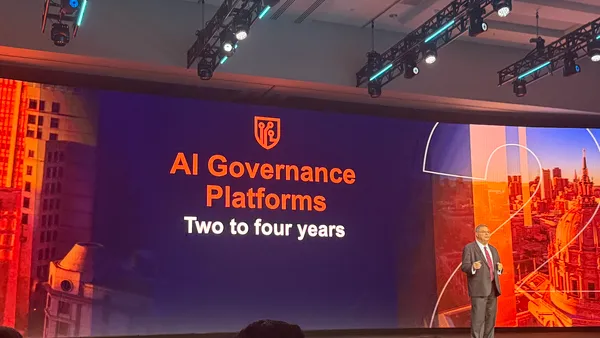Dive Brief:
- The pandemic permanently increased technology leaders' enterprise influence, according to 61% of respondents to the 2020 Harvey Nash/KPMG CIO Survey. The report surveyed 4,200 CIOs and technology leaders in December 2019 and again between June and August 2020.
- CIO board membership fell from 71% in 2017 to 61% in 2020, according to the report. Technology continues to hold a presence in top leadership in other ways: Three-quarters of CTOs and nearly two-thirds of chief digital officers (CDO) hold main board positions.
- Just 10% of organizations have no representation from tech leadership at the board level, according to the survey.
Dive Insight:
Stats show board participation is sliding for the CIO role, but there's nuance to consider.
Though the traditional role of CIO, or IT director, may be decreasing in influence, the people who oversee technology are just "calling themselves different things," such as CTO or CDO, said Rob Grimsey, director, Harvey Nash Group.
"The traditional job function of IT management is decreasing in importance as technology is becoming managed by much wider areas of the business," said Grimsey.
With estimates for global IT spend set to drop in 2021, there's a corresponding intention from the enterprise to rein in spend. Just 30% of executives from enterprise-level organizations say they anticipate IT spend to increase next year.
In decades past, the scope of a CIOs influence was measured by budget sizes or the amount of staff under their control, said Grimsey. Now, as tech spend becomes priority for the whole organization, the modern CIO is one who can "exercise power and influence through collaboration and relationship building, rather than control and authority."
As organizations reorder their priorities, CIOs can exercise their knowledge and connections within the organization to effect change.
"CEOs want somebody who's got that balanced view of the company," said Grimsey. "That won't ever change, and CIOs should play to that strength.













